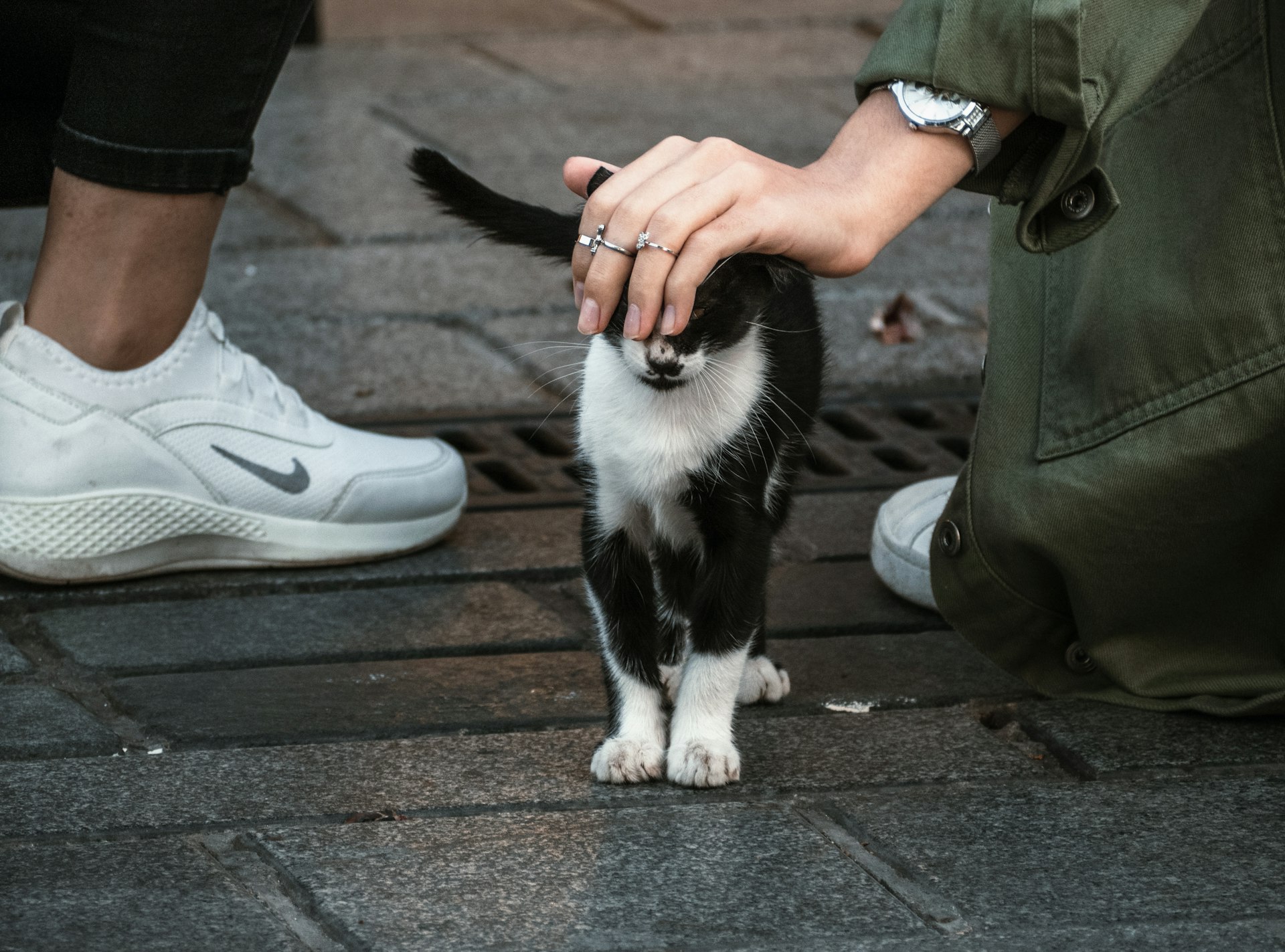Urban Pet Adoption in 2025: Trends, Technology, and Community Impact


Photo by Stanislav Margolin on Unsplash
Introduction: The Changing Landscape of Urban Pet Adoption
Urban communities are at the forefront of evolving pet adoption trends in 2025 , driven by demographic shifts, technological advancements, and changing attitudes towards pets. As cities grow, so too does the demand for accessible, flexible, and humane pet adoption processes. Whether you are an individual considering adoption or an organization seeking to improve outcomes, understanding these trends is vital.
Demographic Shifts and the Urban Pet Owner
Recent research highlights that more U.S. households now have pets than children, a stark indicator of shifting family priorities in urban environments. Millennials and Gen Z residents, in particular, are opting for pets as companions, sometimes in place of starting traditional families. This preference is reflected in smaller living spaces favoring smaller pets and breeds, and a growing interest in the emotional and mental well-being of animals. [4]
Pet humanization has intensified, with urban pet owners investing in comfort, health, and happiness through custom furniture, tech gadgets, and regular grooming appointments. The desire for mental stimulation and social engagement for pets is now a common expectation among adopters. [4]
Adoption Statistics and Market Overview
In the first half of 2025, about 1.9 million dogs and cats were adopted nationwide, with urban centers accounting for a significant proportion of these adoptions. However, there was a slight 1% decrease in total adoptions compared to the same period in 2024, and intake rates dropped by 4%. Notably, while adoptions of large and medium dogs fell, small dog adoptions increased by 6% . Juvenile dogs and cats are also being adopted at higher rates than adults and seniors. [1]
Municipal shelters play a key role, adopting out approximately 27% of all dogs and cats, with foster-based rescues handling the highest proportion (30%). Private shelters and organizations with municipal contracts fill out the landscape, ensuring a diversity of options for urban adopters. [1]
Technology-Driven Adoptions and Innovations
Technology is transforming pet adoption, making it more efficient and accessible. AI-powered platforms now match adopters with pets based on lifestyle, preferences, and compatibility, resulting in more successful placements. Virtual tours and live video chats allow prospective adopters to meet animals remotely, breaking down geographical and logistical barriers. [3]
Data analytics enable shelters to anticipate seasonal trends, optimize staffing, and target fostering campaigns when intake rates spike. Augmented reality tools simulate pet interactions, helping adopters visualize life with a new animal before making a commitment. These innovations are especially useful in densely populated urban areas where time and space constraints are common.
To access these platforms, start by visiting established organizations such as your local city animal shelter, national rescue directories, or major organizations like Best Friends Animal Society. If you are unsure which platform to choose, search for “AI pet adoption platform” or “virtual pet adoption tool” in your region.
Community Partnerships and Collaborative Strategies
Urban shelters increasingly rely on community partnerships to maximize adoption outcomes. Joint events, shared resources, and cross-promotion between municipal shelters, private rescues, and foster networks create a more robust support system for animals in need. [2]
Shelters and rescues promote adoption events, reduce or eliminate fees, and remove barriers such as lengthy application processes. If you wish to participate or support these initiatives, contact your local municipal shelter or recognized rescue organization to inquire about upcoming adoption drives or volunteer opportunities. Many organizations maintain social media pages and newsletters with event information.
Focus on Underrepresented Animals
While cats and dogs remain the dominant adoptees, 2025 has seen a rise in awareness and adoption of underrepresented species-rabbits, guinea pigs, reptiles, and birds. Urban rescues are expanding their capacity to include these animals, offering specialized care guides and adoption counseling. If interested in adopting a non-traditional pet, search for “small animal rescue” or “exotic pet rescue” in your city. Always verify that the organization is registered and has positive reviews.
Barriers to Adoption and Solutions
Common challenges in urban pet adoption include limited living space, landlord restrictions, and lifestyle compatibility. To overcome these, shelters are offering flexible fostering programs, counseling services, and partnerships with pet-friendly housing agencies. Many rescues now provide trial adoptions, allowing potential owners to assess fit before making a permanent decision.
If you face housing restrictions, consider reaching out to your city’s animal welfare department or searching for “pet-friendly apartments” or “pet adoption counseling”. These strategies can help ensure a smooth adoption process tailored to your circumstances.
How to Get Started: Step-by-Step Guidance
1. Research Local Shelters and Rescues: Use city directories or search engines to find registered organizations in your area. Look for shelters affiliated with the municipality, private rescues with strong reputations, and foster-based networks. Verify their credibility through online reviews and social media presence.
2. Explore Online Platforms: Visit established sites for virtual tours and AI-powered matching tools. If unsure, use search terms like “virtual pet adoption” or “AI pet match” plus your city name.
3. Attend Adoption Events: Check local listings, community boards, and the official websites of shelters and rescues for event dates. Many organizations announce fee-waived adoption weekends or special drives on their social media channels.
4. Prepare Your Home: Assess your living space and ensure it meets the needs of the type of pet you wish to adopt. Consult with shelters on necessary supplies and environmental adjustments.
5. Complete the Application: Follow the adoption process outlined by your chosen organization. Many now offer streamlined digital applications and virtual interviews. Be prepared to answer questions about your lifestyle, experience, and expectations.
6. Post-Adoption Support: Take advantage of counseling, training resources, and community support groups. Most reputable organizations provide post-adoption check-ins and guidance.
Alternative Pathways and Additional Resources
If traditional adoption isn’t feasible, consider fostering, volunteering, or supporting shelters through donations. Foster programs allow you to care for animals temporarily, providing flexibility and invaluable support to organizations. Volunteering can range from administrative help to direct animal care, and most shelters offer orientation sessions for new volunteers.
To discover fostering opportunities, search for “pet foster programs” in your city and review eligibility requirements. For volunteering, contact your local shelter or rescue directly and inquire about roles, schedules, and training.

Photo by Phix Nguyen on Unsplash
Key Takeaways
Urban pet adoption in 2025 is defined by technology, community engagement, and a focus on matching pets with environments that suit their needs. By leveraging digital platforms, supporting collaborative events, and addressing common barriers, urban residents can help ensure successful outcomes for both pets and people. Start by researching local organizations, exploring online adoption tools, and participating in community initiatives. For more detailed guidance, connect with municipal shelters, reputable rescues, and established national organizations.
References
- [1] Shelter Animals Count (2025). 2025 Mid-Year Report: National adoption and intake statistics.
- [2] Best Friends Animal Society (2024). New data shows encouraging trend for pets in shelters.
- [3] Clearly Loved Pets Blog (2025). Top 6 Trends For Animal Rescues in 2025.
- [4] Ipsos (2025). What The Future Pets 2025: Perspectives and research.






